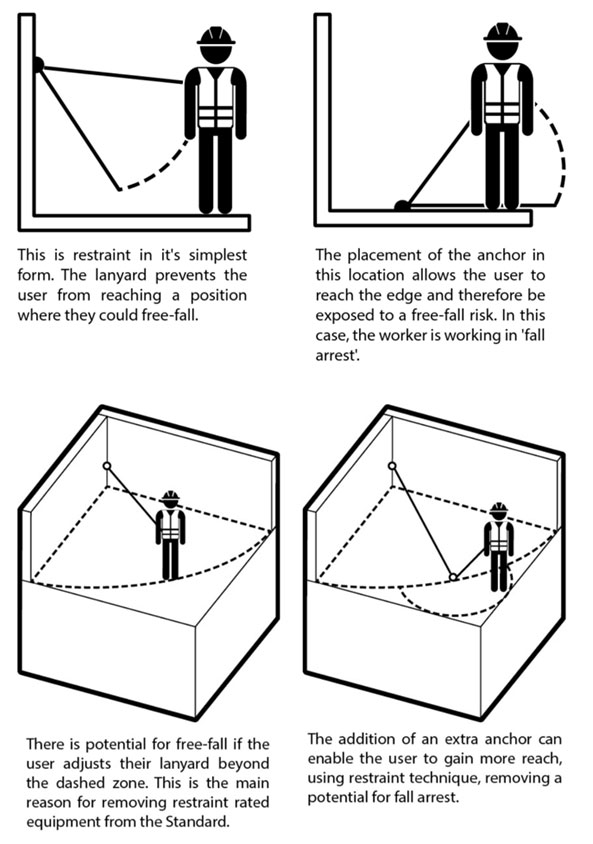Fall Prevention
In simple terms, a fall prevention system physically prevents a worker from taking a fall. Controls effecting fall prevention would usually fall into the substitution, isolation, and engineering categories in the control hierarchy.
Work positioning is a term that is commonly used when working at height to define a positioning in which a person can place themselves that removes the immediate risk of a fall. Work positioning can be ‘Working in Restraint’ when working in a horizontal plane or ‘Working in Suspension’ when working in a vertical orientation.
Either way, work positioning is intended to reduce the risk of a fall by limiting a person’s ability to get into a place where they can fall, as there are physical barriers or equipment that can be implemented to achieve this aim and is a fall prevention method.
Fall Prevention – Working in Restraint
The principle of work in restraint is best illustrated through diagrams. In its simplest form, working in restraint means how a person is ‘restrained’ or prevented from being able to get into a place where a fall can occur. A restrain system involves attaching a worker to an anchor point or static line using a harness and lanyard. An energy absorber must be incorporated into the system to reduce the impact in case of an unplanned fall.
A restrain system is only suitable where the worker can maintain secure footing, and is not appropriate on slopes of 15 degrees or more.
Restraint systems should be installed by competent persons in accordance with ASNZS 1891.4 Industrial fall-arrest systems and devices.
When work tasks require a safety harness to be worn, the practice of work in restraint is to be used wherever possible to reduce the injury risk from a fall.
Other examples of fall prevention systems include:
- Edge protection (guard rails)
- Fall protection (hole) covers
- Safety Mesh
- Temporary work platforms.

An edge or perimeter protection system is a barrier placed around the edge of a working surface to prevent falls. Edge protection may be permanent (and manufactured and installed in accordance with ASNZS 1657 Fixed platforms, walkways, stairways and ladders – Design construction and installation), or temporary (and installed in accordance with ASNZS 4994 Temporary edge protection).
Fall protection covers are placed over openings and holes (such as skylights) to prevent falls. They are usually made of timber, metal or wire mesh. Fall protection covers must be fixed and able to withstand the impact of a falling person, and signage should be used in conjunction with fall protection covers to warn people that there is an opening or hole underneath.
Safety mesh may be installed to prevent falls through roofs. Safety mesh does not provide any edge protection and must be used in conjunction with other fall prevention systems and equipment. Safety mesh should comply with the requirements of ASNZS 4389 Safety mesh.
